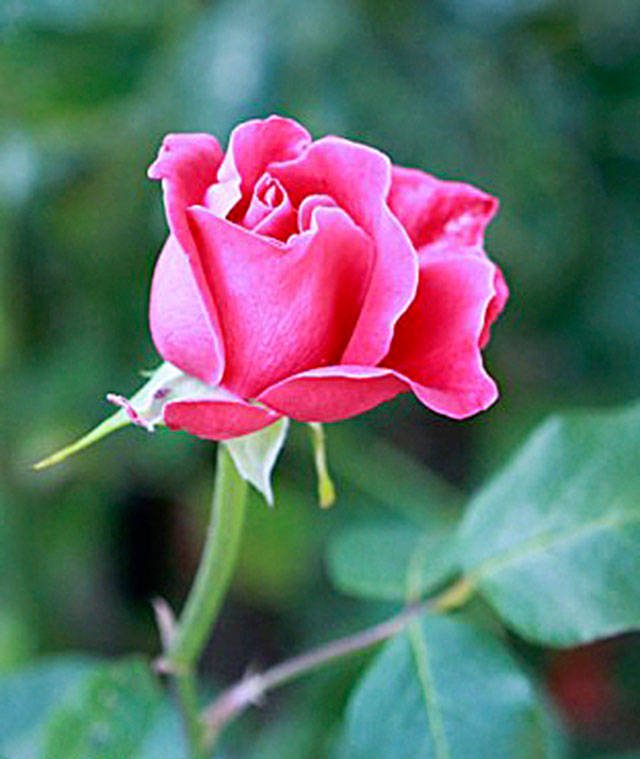Get involved
Join the Master Gardeners at the Fifth Street Community Garden for the Garden Walk on Saturday May 12 from 10-11:30 a.m. in Port Angeles. This educational walk will cover a variety of food crop topics and focus on what is happening in Clallam County vegetable garden during the month of May.
The Thursday “Brown Bag” series feature Rosalie Preble, Master Gardener. She will be presenting “Growing Rhododendrons” from noon-1 p.m. at the Clallam County Courthouse. These presentations are open to the public and are free of, but donations to help support the program charge are appreciated.
Roses are hands down the most popular flower in America. Given the thousands of varieties of roses of varying growth habits in a myriad of hues, there is a rose for virtually every garden. It is simply a matter of selecting one that suits the garden’s microclimate.
Will the rose form a border, carpet the ground, or climb a fence? Identify a suitable location, and make sure there is room for the plant at maturity.
Generally, roses need about 6 hours of morning-to-early-afternoon sunlight and slightly acidic soil (pH 6.0 – 6.5). Working a bit of compost into the soil will help adjust the acidity while gradually releasing the micro-nutrients needed to grow healthy plants.
Roses like to be watered, but they don’t like wet feet. Be sure the soil drains well, or consider planting in raised beds for sites that get soaked in winter. Water at least once a week and mulch during the summer.
Stories of how difficult it is to cultivate healthy roses deter some from even trying. Early hybrid teas, bred primarily for their gorgeous blooms at the expense of fragrance and disease resistance, have given modern roses a bad rap. However, breeders have begun to breed those characteristics back into the latest varieties.
However hardy the rose, it will still need some nurturing to get through its growing season.
Inspect plants regularly for fungal diseases such as powdery mildew, black spot, botrytis blight, and rust. Although generally not fatal, fungal diseases are unsightly and can impair a plant’s growth and health if not kept under control. Pruning the core of the rose bush at the appropriate time will allow good air circulation and inhibit fungal growth.
Discard diseased leaves and canes into the garbage, not the compost pile. Clean pruners with disinfectant to prevent the spread of spores from plant to plant. Rake up any leaves at the base of the plants and dispose of them to avoid spores from overwintering in the leaf debris.
Look for insects on the underside of leaves. Don’t wait till the leaves display signs of predation. Spider mites and aphids can often be removed by hosing with water. Thrips may require insecticidal soap sprays. Keep the garden trimmed and remove any infested grasses or flowers. As with fungal spores, many insect pests overwinter in the vegetative debris at the base of plants, so rake and dispose of dead leaves. Catching insect pests early eliminates them with minimal fuss.
Finally, and most importantly, choose the right rose. As Benjamin Franklin would advise, “An ounce of prevention is worth a pound of cure.” If the plant demands labor-intensive care year after year and has given back little in return, give it up and try another. Get a proven winner for this climate, preferably growing on its own root stock, which makes them hardier and more likely to withstand a harsh winter.
The North Olympic Library System has several books to provide guidance in selecting a rose, including “Growing Roses in the Pacific Northwest” by Nita-Jo Rountree, “Right Rose, Right Place: 359 Perfect Choices for Beds, Borders, Hedges and Screens, Containers, Fences, Trellises and More” by Peter Schneider, and “Roses Without Chemicals” by Peter E. Kukielski.
For descriptions and images of some of the pests and diseases referred to above, visit hortsense.cahnrs.wsu.edu/Home/HortsenseHome.aspx and explore the fact sheets.



